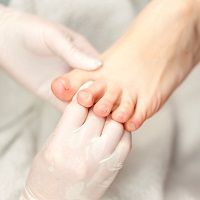Article
Many Gout Patients in England Not Receiving Needed Treatments
Author(s):
For patients living with gout, the pain and discomfort associated with the condition can be relieved by widely available medications. According to a recent study, many patients in England are not getting the treatment they need to help them live symptom-free on a regular basis.

For patients living with gout, the pain and discomfort associated with the condition can be relieved by widely available medications. According to a recent study, many patients in England are not getting the treatment they need to help them live symptom-free on a regular basis.
The study, published in the Journal of the American Medical Association, noted that the prescribing of urate-lowering medications was often delayed longer than it needed to be. Data from the study was accumulated between 1997 and 2010 using the Clinical Practice Research Datalink. A total of 52,164 patients were diagnosed with gout during that time, with an average age of 62.5 years. An overwhelming 73% of those patients were male.
Following diagnosis, the average first treatment indication was 5 months for those patients with an interquartile range of 0-29 months. The “cumulative probability of fulfilling any indication” was 44.26% (95%CI, 43.83-44.69%) at 0 years; 61.02% (95% CI, 60.60-61.44%) at 1 year; 86.81% (95% CI, 86.49-87.13%) at 5 years; and 94.27% (95% CI, 93.98-94.56%) at 10 years, according to the authors.
During that time the “cumulative probabilities for prescription” were 0, 16.90 (95% CI, 16.58-17.22%), 30.39% (95% CI, 29.90-30.81%), and 40.52 (95% CI, 39.96-41.08%) The authors also reported the average prescription rate for urate-lowering treatments was just 32.5% (interquartile range, 26.3-39.3%; range 0-100%).
“Compared with not fulfilling each specific indication, most indications for treatment were associated with increased prescribing,” the authors said.
The hazard ration was 1.60 (95% CI, 1.55-1.65) for “acute gout attacks during the first year following diagnosis,” 1.87 (95% CI, 1.56-2.24 for tophi, 1.67 (95% CI, 1.60-1.74) for chronic kidney disease, and 1.57 (95% CI, 1.51-1.62 for “diuretic use at diagnosis.”
“A total of 44% of patients fulfilled indications for urate-lowering treatment at initial diagnosis, and 87% were eligible within 5 years of diagnosis,” the authors reported. “However, only a minority of those eligible were treated according to current recommendations.”
The authors also noted that factors involving the patient or practice only accounted for “one-fifth of the variance in prescription.” They added, “The unexplained variance may be accounted for by factors not available in the database. Recognized barriers to care include suboptimal patient and physician knowledge of gout, its treatment, and clinical recommendations, and patient and physician preferences for treatment.”





